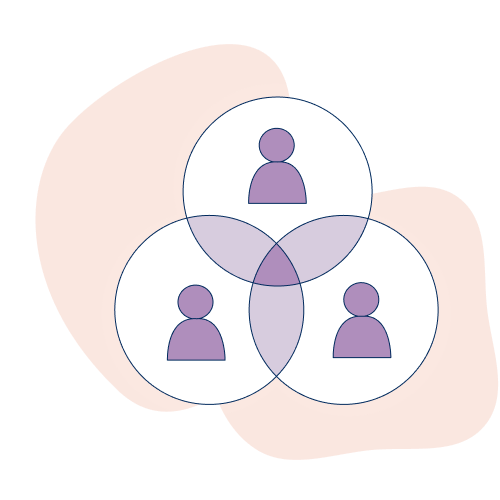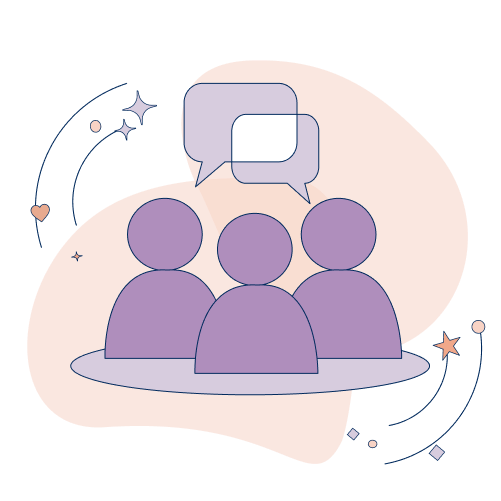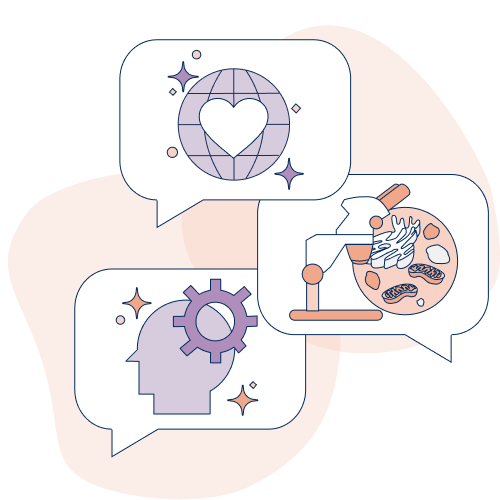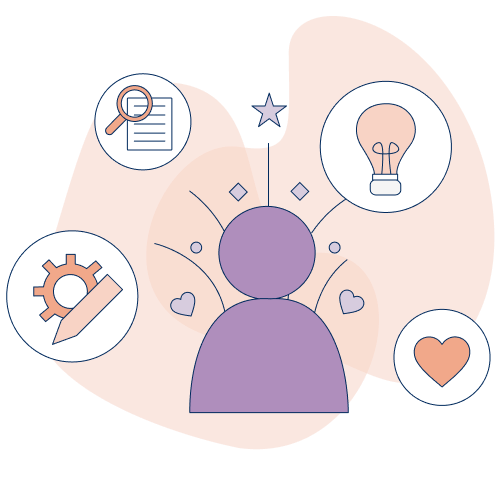
In today’s fast-paced world, solving complex problems requires teamwork across different disciplines. Faria highlights the importance of starting interdisciplinary collaboration in classrooms to prepare students for future professional environments.
Written by Faria Islam, Blog Writer, Honours Bachelor of Science, Health Studies and Psychology Double Major
Imagine a world where creativity gradually disappears, and the diversity of knowledge that sets each of us apart is overlooked. It would be stagnant and nothing new would happen, right? But through interdisciplinary collaboration, we have the chance to learn from different people and find new ways of doing things.
Discovering Unity in Diversity

I first realized the value of collaboration when I took an upper-level Health Studies course. I thought it would be like other classes with a typical lecture-based format but, surprisingly, it turned out to be different. In an early group project for this course, I collaborated with other students with a variety of interests to explore the topic of the “Aging Brain” during a two-hour in-class session. As a psychology major, I naturally approached the topic of the aging brain from a psychological angle. Yet, another student delved into biological aspects of the aging brain, while a third student with a computer science background focused on using robotics and AI (Artificial Intelligence) to address loneliness in older adults.
A key takeaway from this collaboration was that, when we stepped away from our individual ways of thinking, we were able to view the topic in a new light and get a more complete picture of the subject. By tapping into each other’s diverse range of strengths, we were also able to compile a presentation in much less time than if we had worked on it by ourselves.
Embracing Diversity in Design Thinking

Design thinking taps into diversity the same way my group project did: by combining diverse perspectives from diverse individuals. Design thinking views learning as an ecosystem where we connect with different groups of people to innovate and find potential solutions to challenges. When interdisciplinary teams collaborate, they offer a variety of viewpoints to the problem at hand, ultimately driving innovation. This approach can capture the bigger picture of an issue and make sure that everyone feels heard. By having everyone provide input, we can create solutions that work for all.
Innovation through Collaboration

Collaborative effort is more crucial than ever, given the complex challenges we face in the 21st century. Some of the most common challenges like climate change, global health crises, and AI advancements, require solutions from interdisciplinary approaches because no single field of study can address these issues entirely on its own.
The Human Genome Project is a perfect example of learning through interdisciplinary collaboration. Biologists studied genes while computer scientists developed tools to analyze large amounts of genetic data, and together, they decoded genetic code, which has enhanced our understanding of the cause of various health issues and led to more precise and effective treatments. This demonstrates that, although we learn science, math, and other subjects separately in our classes, they are not meant to be applied in isolation in our future professions. Instead, we’ll integrate these disciplines to design innovative solutions. So why not start practicing now, while we are in the classroom?
Exploring Multi-Faceted Solutions

While interdisciplinary collaboration can be challenging, it becomes more manageable and stimulating as we learn to incorporate diverse perspectives. Moving forward, I encourage readers to be open to learning from others, regardless of their major, and to seek opportunities to blend subjects in real life.
For example, if you are learning about a scientific experiment, consider looking at the experiment from the perspective of multiple disciplines. Rather than only looking through the lens of biology, reflect on how statistics have simplified the data and findings, how biomedical ethics ensured ethical standards throughout the procedures, how businesses can benefit from research findings to develop new products, and so on.
These connections are all around us! With this in mind, how can we, as students, initiate an interdisciplinary approach in our university experiences starting today?
Learn more about interdisciplinary collaborations on campus with the resources mentioned below:
1. Interdisciplinary programs at UofT
- Precision Medicine Program: utilizes world-class expertise in diverse domains to develop new solutions for unmet needs in human disease.
- Munk School’s Reach Alliance: Global network investing in an inclusive economy.
- Institutional Strategic Initiatives (ISI) – U of T’s capacity for high-impact interdisciplinary research.
2. Campus Initiatives/Resources:
- U of T’s Hub on Ten Thousand Coffees: Online networking for the U of T community.
- In the Field Events: Explore diverse careers through workplace visits.
- Job Shadowing: Connect with diverse individuals for short-term placements.
References
Chatty robot helps seniors fight loneliness through AI companionship. (2023, December 22). AP News. https://apnews.com/article/artificial-intelligence-robot-elliq-senior-citizens-a343409477b7aea350254f94daf52eb7
Experiences of Students Who Are Also Parents 2. (2024). https://blogs.studentlife.utoronto.ca/innovationhub/files/2024/02/2024-01-30-Experiences-of-Students-Who-Are-Also-Parents-Report.pdf
Hood, L., & Rowen, L. (2013). The human genome project: big science transforms biology and medicine. Genome Medicine, 5(9), 79. https://doi.org/10.1186/gm483
How the Aging Brain Affects Thinking. (2023, June 27). National Institute on Aging. https://www.nia.nih.gov/health/brain-health/how-aging-brain-affects-thinking#:~:text=Aging%20may%20also%20bring%20positive
I-Think. (n.d.). The Innovation Hub. Retrieved March 27, 2024, from https://blogs.studentlife.utoronto.ca/innovationhub/ithink/
Latham, A. S., Moreno, J. A., & Geer, C. E. (2023). Biological agents and the aging brain: glial inflammation and neurotoxic signaling. Frontiers in Aging, 4. https://doi.org/10.3389/fragi.2023.1244149
National Human Genome Research Institute. (2022, August 24). Human Genome Project. Genome.gov. https://www.genome.gov/about-genomics/educational-resources/fact-sheets/human-genome-project
Reimagining Commuter Student Spaces 2. (2024). https://blogs.studentlife.utoronto.ca/innovationhub/files/2024/02/2024-01-30-Reimagining-Commuter-Student-Spaces-Final-Repor.pdf
0 comments on “Accelerating Innovation through Interdisciplinary Collaboration ”